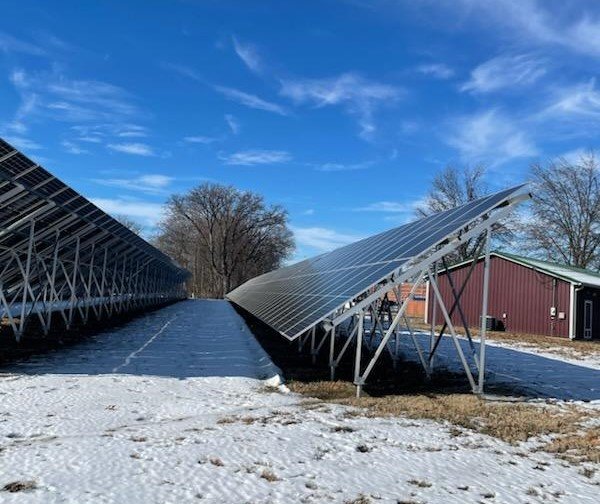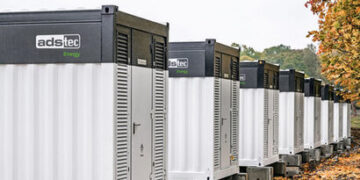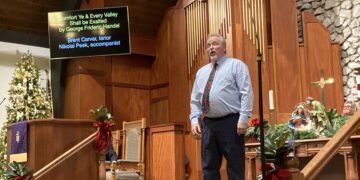The Henderson County Detention Center is taking a major step to save taxpayer resources—in more ways than one.
In just a few short weeks, the HCDC will add solar power generation to their facility which not only spares natural resources but financial ones as well.
“We are always looking at ways to save money,” said Jailer Bruce Todd. “I noticed that some homeowners and small businesses had solar power and thought that it may work for the detention center.”
Working with an area company called Amerlight Energy LLC, Todd learned that the number of solar panels needed to light up the jail, the framework and the installation would cost approximately $496,400.
To put that in perspective, the annual cost of electric power at the jail is around $370,000.
Todd said using solar power projects a yearly savings of $81,000 or about $6,750 a month.
“Our contract is a lease to own with monthly payment of $2,757 for 180 months,” he said.
The project was intended to be completed in warmer weather, Todd said, but supply issues hampered the process.
“It took a while to get in the framework after they ordered it which is the reason for the delay,” Todd said. “Once the parts arrived, they started putting it together. That was in November.”
Despite the winter storms and freezing temperatures, Amerlight crews worked steadily to install the framework housing 420 solar panels which will generate power for the entire facility. The array covers about an acre and a half of the jail’s property.
“When they started construction, I went out there a lot,” Todd said. “It was freezing. They did a good job. It looks good.”
By late January, the project was in its final stages.

“Galloway Electric has run the electrical wiring from the battery packs at the solar panel to the building,” Todd said. “We are now waiting for the weather to break to coordinate with HMP&L and Galloway Electric so representatives from both companies can be on hand when it’s turned on.”
While the jail’s solar power initiative looks to save taxpayers locally, it could have a wider impact as the idea catches on in other jurisdictions.
In doing some research, Todd said he discussed solar power with staff at the Department of Corrections and discovered that no other state- or county-operated correctional facility in Kentucky uses this resource.
“When we began the process of transitioning to solar power, I mentioned it to a couple of other jailers. And I had some calls from them wanting to know how it’s working,” he said. “Of course, we weren’t up and running then, but I think once we are, those jailers said they want to come and check it out because they might be interested in doing something similar.”
Todd said it’s anticipated that flipping the switch to solar power will take place by early February.
Henderson County Judge-Executive Brad Schneider said magistrates didn’t hesitate to get on board when Todd started the process of moving to solar power.
“We had already done something similar for the Henderson Judicial Center. The roof of the judicial center has a large solar array on top of it. We did it for cost savings,” he said.
“Henderson Municipal Power & Light has really discounted rates if you mount solar panels on your business or home. And we worked with a company based here called Amerlight Energy LLC (located in Henderson and in Evansville). We began to see real savings.
“And Bruce, who is always looking to save a buck, inquired as well. That led to a deal, and it got done,” Schneider said. “The jail’s array isn’t that big, and it fits on the footprint of the extra ground they had. It’s not humongous, but it works.”
While several private businesses are now using solar power, it’s unlikely any more county-owned entities will.
“Amerlight came and conducted a survey which is where they checked power usage and available ground to determine if they could save the county any money,” Schneider said. “The answer was no except for the judicial center and the jail which are two of our biggest buildings.
“I’m eager to see how the jail’s electric bills come down over the years. I guess HMP&L is going to continue to offer the discounted rates to people who do this, so if people want to reduce electric bills, it’s something to look at.”
Brad Bickett, General Manager for HMP&L said the Distributed Generation rate schedule, “is available for each customer type, which includes residential, commercial, and industrial. The DG rate, also referred to as a net metering rate, allows any customer to receive power at HMP&L’s cost per kWh, and includes a monthly charge that recovers the estimated fixed costs to provide and maintain their electric service.
“The customer also receives credit for any power generated and received by HMP&L at the same purchased power kWh rate,” he said.
For more information go to www.hmpl.com/rates-and-fees.html.





















